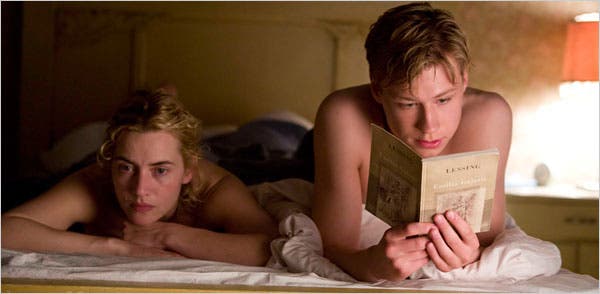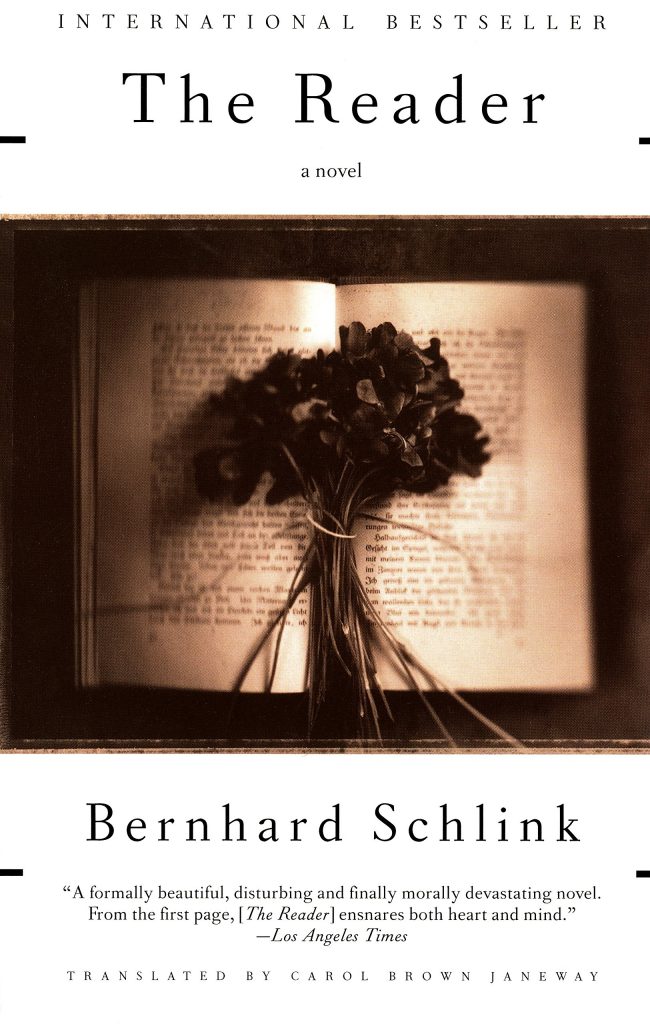A Review of The Reader
Lauren Simpson // Blog Writer
The Reader by Bernhard Schlink was published in Germany in 1995 and in the US in 1997. The story follows a young boy, Michael Berg, who suffers from jaundice, as he meets Hanna, a much older woman. At the beginning of his illness, Michael vomits in public. Mortified, he is helped by Hanna to clean himself up. He spends months tucked away at home, recovering, with Hanna on his mind the whole time. Soon, they begin a love affair despite their stark age difference. After exploring love to the lengths he hadn’t previously known – and never would again – Hanna leaves town without a word. It isn’t until Michael is a law student studying an active trial with his classmates that he sees her again, as she’s prosecuted for war crimes following World War II.

This book delves into soldiers’ moral ambiguity when faced with difficult decisions in World War II and the subsequent retribution. Told without judgment, The Reader presents its audience with as many questions as it answers, giving the reader a chance to decipher right from wrong in this incredibly unbiased and well-told narrative.
At times erotic, cruel, horrifying, and tragic, this piece shows its strengths by pulling an emotional response from the reader. Through seemingly clear cut circumstances, The Reader begs the audience to delve deeper and see these characters as not a generalization of war and cruelty, but as flawed people. It asks the question of possible redemption.

The Reader shows its audience that even after the war is done, there is moral guilt that plagues generations to come. It begs the question of whether it is the duty of the future to condemn past generations, even if that means condemning their parents, family, loved ones, and even in this instance, their lovers. This story shows that even after the war finished, Germany had to undergo a healing process that plagued the country for years to come, which is not so apparent in history books. It also begs the question, is it immoral to recognize this at all because it may be disrespectful to the people who suffered in World War II?
Mercy and longing seem to be the most prevalent emotional responses in the book, felt by both Michael and Hanna as they navigate post-war Germany and the love between them that never completely disappeared. Michael is at first forced but then continues to attend the trial that seems to target Hanna alone as her colleagues turn on her, pointing the blame in her direction in order to free themselves. Hanna, unwilling to deny her sins point-blank, takes the brunt of the blame, even the parts of which she isn’t guilty. Michael, torn in every way, watches this persecution of someone he used to know, someone he still loves, and someone he believes, though it pains him, deserves punishment for her crimes.
Schlink illustrates an incredibly vivid picture in this critically acclaimed novel. Showing us the gray area of the monsters we condemn, Schlink refuses to lead the reader to one position or the other, instead giving the audience a chance to determine where justice is due all on their own.
